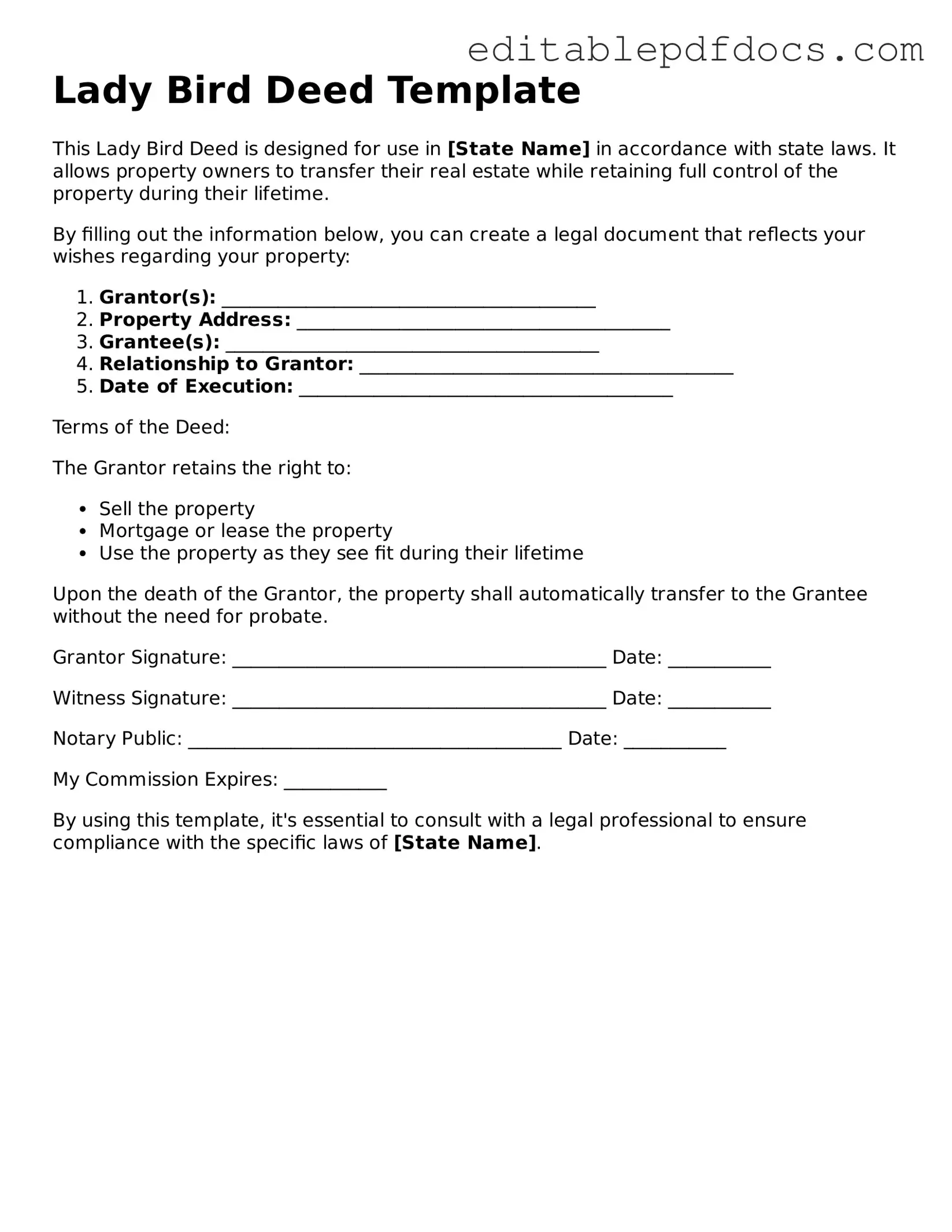Free Lady Bird Deed Document
The Lady Bird Deed, also known as an enhanced life estate deed, is a legal document that allows property owners to transfer their real estate to their beneficiaries while retaining the right to live in and control the property during their lifetime. This unique form of deed can help avoid probate and provide tax benefits, making it an appealing option for many homeowners. If you're considering using a Lady Bird Deed, you can easily fill out the form by clicking the button below.
Open Editor Now
